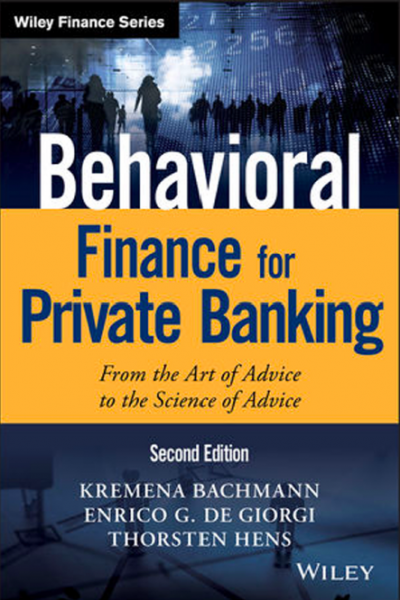Behavioral Finance for Private Banking From the Art of Advice to the Science of Advice
Behavioral Finance for Private Banking From the Art of Advice to the Science of Advice (Kremena K. Bachmann, Enrico G. De Giorgi etc.)
![]()
- 90,000đ
- Mã sản phẩm: BE2966
- Tình trạng: 2
CHAPTER 1
Introduction 1
CHAPTER 2
Behavioral Biases 5
2.1 Information Selection Biases 6
2.2 Information Processing Biases 11
2.3 Biases after Receiving Feedback 31
2.4 Are More Heads Smarter Than One? 33
2.5 Summary of Biases 35
2.6 Conclusion 39
CHAPTER 3
Cultural Differences in Investors’ Behavior 41
3.1 What Is Financial Culture? 41
3.2 The INTRA Study 43
3.3 Conclusion 46
CHAPTER 4
Neurological Foundations and Biases’ Moderation 47
4.1 The Human Brain 47
4.2 Insights for Behavioral Finance 48
4.3 Moderation of Biases 49
4.4 Conclusion 50
CHAPTER 5
Diagnostic Tests for Investment Personality 51
5.1 A Case Study 51
5.2 Design of Diagnostic Questionnaires 52
5.3 Knowledge and Investment Experience 53
5.4 Psychology and Emotions 59
5.5 Client’s Diagnostic Profile 65
CHAPTER 6
Decision Theory 69
6.1 Introduction 69
6.2 A (Very) Short History of Decision Theory 70
6.3 Expected Utility 73
6.4 Mean-Variance Analysis 76
6.5 Prospect Theory 78
6.6 Rationality of Mean-Variance and Prospect Theory 87
6.7 The Optimal Asset Allocation 91
6.8 Comparing the Decision Theories 102
6.9 Conclusion 103
CHAPTER 7
Product Design 105
7.1 Introduction 105
7.2 Case Study 107
7.3 Theory of Product Design 114
7.4 Structured Products Designed by Customers 120
7.5 Conclusion 123
CHAPTER 8
Dynamic Asset Allocation 125
8.1 Time Diversification 126
8.2 Rebalancing 129
8.3 Conclusion 134
CHAPTER 9
Life-Cycle Planning 137
9.1 Case Study 137
9.2 Case Study Werner Bruni 139
9.3 Consumption Smoothing 140
9.4 The Life-Cycle Hypothesis 141
9.5 The Behavioral Life-Cycle Hypothesis 143
9.6 Conclusion 146
CHAPTER 10
Risk Profiling 147
10.1 Risk-Profiling Methodologies 148
10.2 Comparing Risk-Profiling Methodologies 151
10.3 A Case Study 152
10.4 The Risk Dimensions 153
10.5 Behavioral Risk Profiler 155
10.6 Risk Profiling and Its Regulation 166
10.7 Conclusion 167






